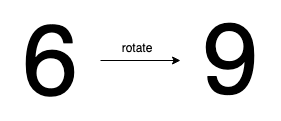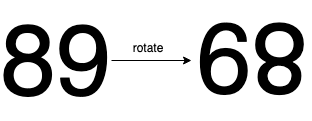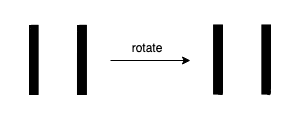原题链接在这里:https://leetcode.com/problems/confusing-number/
题目:
Given a number N, return true if and only if it is a confusing number, which satisfies the following condition:
We can rotate digits by 180 degrees to form new digits. When 0, 1, 6, 8, 9 are rotated 180 degrees, they become 0, 1, 9, 8, 6 respectively. When 2, 3, 4, 5 and 7 are rotated 180 degrees, they become invalid. A confusing number is a number that when rotated 180 degrees becomes a different number with each digit valid.
Example 1:

Input: 6
Output: true
Explanation:
We get 9 after rotating 6, 9 is a valid number and 9!=6.
Example 2:

Input: 89
Output: true
Explanation:
We get 68 after rotating 89, 86 is a valid number and 86!=89.
Example 3:

Input: 11
Output: false
Explanation:
We get 11 after rotating 11, 11 is a valid number but the value remains the same, thus 11 is not a confusing number.
Example 4:

Input: 25
Output: false
Explanation:
We get an invalid number after rotating 25.
Note:
0 <= N <= 10^9- After the rotation we can ignore leading zeros, for example if after rotation we have
0008then this number is considered as just8.
题解:
Check the digit from back to front, if it is not 0, 1, 6, 8, 9, then it is not valid.
And accumlate the corresponding number to num, check if num != N.
Time Complexity: O(n). n is digits of N.
Space: O(1).
AC Java:
1 class Solution { 2 public boolean confusingNumber(int N) { 3 HashMap<Integer, Integer> hm = new HashMap<>(); 4 hm.put(0, 0); 5 hm.put(1, 1); 6 hm.put(6, 9); 7 hm.put(9, 6); 8 hm.put(8, 8); 9 int cur = 0; 10 int temp = N; 11 12 while(N > 0){ 13 int d = N % 10; 14 if(!hm.containsKey(d)){ 15 return false; 16 } 17 18 cur = cur * 10 + hm.get(d); 19 N /= 10; 20 } 21 22 return cur != temp; 23 } 24 }